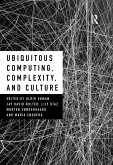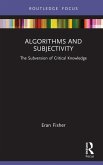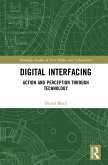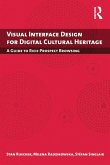Dieser Download kann aus rechtlichen Gründen nur mit Rechnungsadresse in A, B, BG, CY, CZ, D, DK, EW, E, FIN, F, GR, HR, H, IRL, I, LT, L, LR, M, NL, PL, P, R, S, SLO, SK ausgeliefert werden.
"The rise of pervasive technology encourages information to roam free from the confines of the desktop into every aspect of our lives. To navigate this complex, cross-media environment, we need master architects. This book, from two of the field's foremost thinkers, is a shining landmark for this new world." --Cennydd Bowles, author, Undercover User Experience Design
"It has been a long time since I've been excited about an Information Architecture book. Andrea and Luca have done something truly innovative in bringing Information Architecture out of the design studio and into the streets. A lot of people talk about "pervasive" and "holistic" as ideals -- this book provides solid thought around cross-channel/multi-channel customer experience design. It effectively challenges the view that any one service delivery channel (such as web, or call center, or shopfront) can be considered in isolation. I will be actively recommending this book to colleagues and clients." --Andrew Boyd, UX Community Lead, SMS Management and Technology (http://smsmt.com)
"Resmini and Rosati have delivered a landmark volume in the evolution of information architecture, communicating relatively esoteric insights about our changing info-landscape in a humane and personable manner. If your work involves shaping how people experience digital and data-informed products and services, then you need to read this book."-Christian Crumlish, co-author of Designing Social Interfaces
"This unique text offers an attractive, reader-friendly layout, demonstrating concepts creatively with thought-provoking color and b&w photos, illustrations, and images, many from art history. The volume is designed so that readers can jump from image to image and find the core ideas of the chapter. Sidebars of key ideas also increase the book's browsability. Employing a multidisciplinary approach to information architecture and the design of the new pervasive information spaces, the book draws on insights in diverse disciplines from cognitive psychology to cinema. Each chapter begins with a short story and concludes with case studies and a list of articles, books, movies, and videos. Part 1 surveys information architecture as both a field of practice and a research discipline. Part 2 illustrates five design principles, and Part 3 shows how to apply these principles with a real-life case study. Parts 2 and 3 include boxed contributions from international authors, researchers, and practitioners. Readers can access a companion web site and a blog." --Reference and Research Book News









